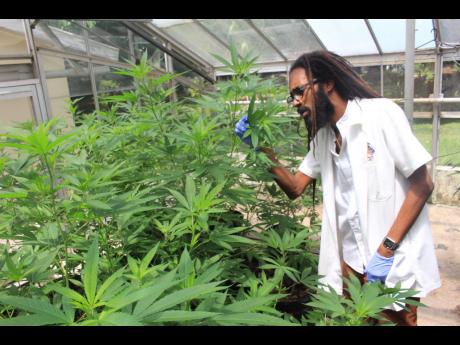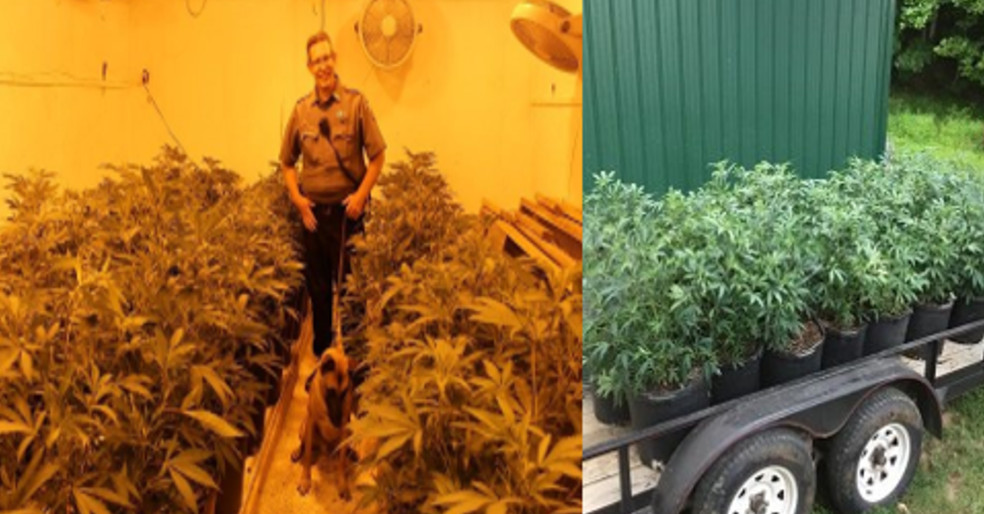The amount of water and frequency of watering depend on a number of factors including the size of the marijuana plants, the size of the container, canopy, root level, room temperature, humidity, and the stage of growth.
Larger marijuana plants need more water.
Large containers need to be watered less extensively.
Hotter temperatures call for more water.
Higher humidity calls for less frequent watering.
During the end stages of flowering, plants will use less water.
During the hot summer days, the soil for outdoor marijuana plants tend to dry out rather quickly and, thus, should be observed and watered as needed. Compost and water-holding crystals can help the soil hold water for extended periods of time.
Drowning roots
Symptoms: You’ll see no discoloration. The leaves will droop (but won’t be wilted) with an unhealthy and fatigued aesthetic. Growth will slow to a crawl (if even that).
The Problem: Marijuana plants that suffer from over-watering will develop an anaerobic condition (i.e. a condition in which oxygen is absent). Roots cannot use carbon dioxide, but they need oxygen. That oxygen generally comes from the air pockets between soil particles. When the roots don’t have an adequate oxygen supply, they cannot function right and will eventually lose their potency. Because of this, roots are much more susceptible to pathogens.
There are three possible causes of drowning roots indoors.
You are watering too frequently and the planting mix cannot drain properly.
The drainage holes are either nonexistent or clogged.
The particles in the soil or planting mix are too small and are not allowing water to pass through. (To test this, water the mix. After saturation, the water should drain out freely. Mixes that drain slowly have textures that are far too tight).
Solutions: Ensure that the container has viable drainage holes. If it doesn’t, just cut some into the bottom of the container with a knife, drill, or thermal tool.
If the particles in the planting mix are too fine, then just water your plants less frequently. Coarser, more aerated planting mixes should be used if you are transplanting the current plant or considering new options for the future.
Outdoor problems
Soils that are saturated with clay and/or rain will generally cause poor drainage. By contrast, sandy soils might drain too well. Get a free guide about growing marijuana at this link here.
Under-watering: Wilted plants
Symptom: Plants grow slowly and are wilting.
Solution: This one’s easy: just water the plants. If they are wilted, don’t use fertilizer-enriched water as this can cause more problems. Instead, use un-enriched, but pH-adjusted water. After the plants have regained their upright stature, you can then restart the fertilizer program.
If the quantity of water is barely enough to maintain the plants, growth will obviously slow down. But, this might be hard to recognize at first. The plants will experience a growth spurt as they start to receive more generous supplies of water in concert with an already adequate nutrient value.
Water Temperature
Problem: At what temperature should I keep my hydroponic water?
Solution: In gardens with canopies that have normal temperatures (78*F or 24*C), you should maintain a water temperature of about 72 to 74*F (22-23*C). If the temperature of the canopy is higher, then you should decrease the water temperature by a few degrees.
If you want to start growing, download my free grow guide and order some marijuana seeds. All top quality marijuana seeds are available in my marijuana seed shop. We ship seeds to the US, CA and many other countries. For any growing related question please visit the marijuana support page.
credit:theweedblog.com













